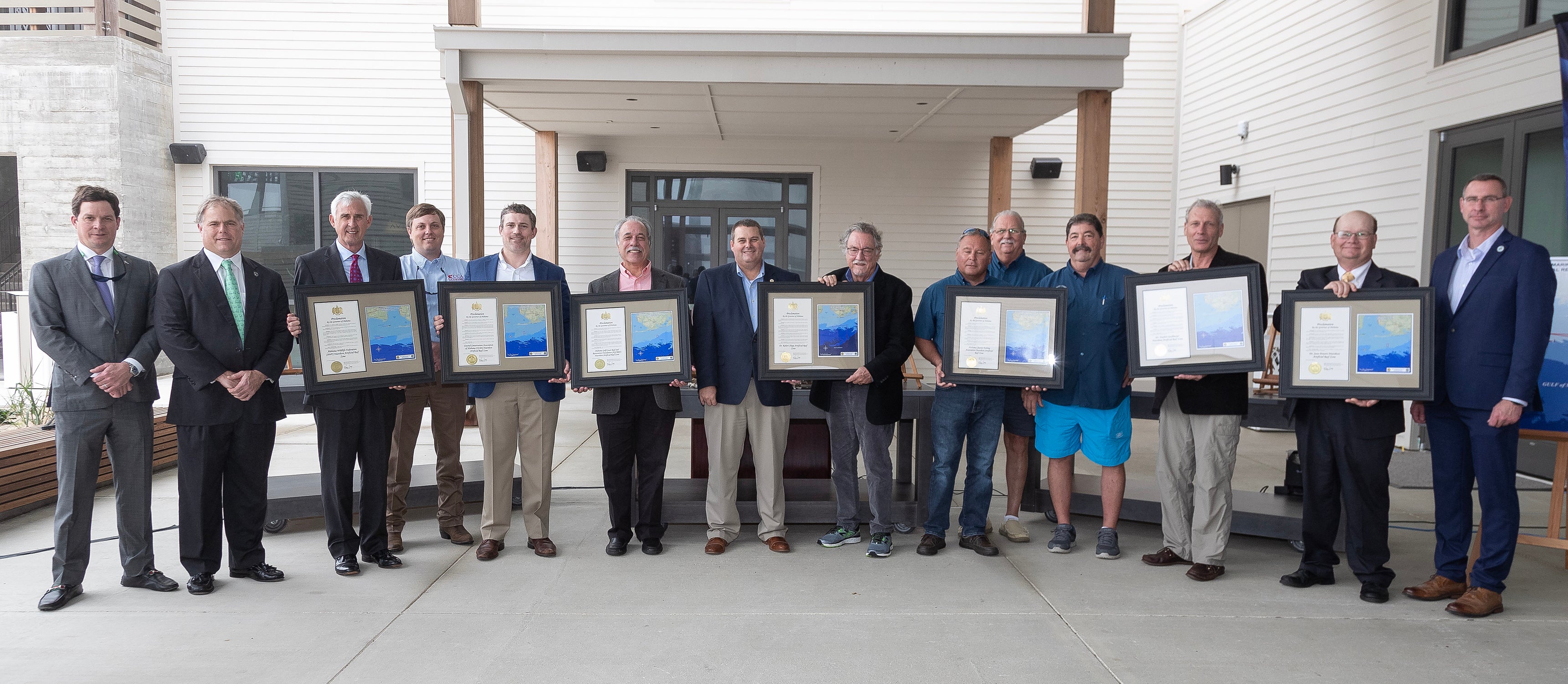By DAVID RAINER, Alabama Department of Conservation and Natural Resources
If any doubt existed that Alabama has the best artificial reef program in the world, Chris Blankenship made an emphatic declaration last week that Alabama’s artificial reefs are unparalleled anywhere on the planet.
Blankenship, Commissioner of the Alabama Department of Conservation and Natural Resources (ADCNR), made that unabashed statement at The Lodge at Gulf State Park during a naming ceremony for seven new artificial reef zones in nearshore waters off the coast of Alabama and the renaming of one existing offshore reef zone.
“We live in an extremely beautiful state,” Blankenship said. “God has really blessed us with the beach, the mountains, the Black Belt and all the areas in between. We have some of the best hunting and fishing, and I get to go around the country and talk about all the wonderful things we have in Alabama. But there is nothing that I’m more passionate about than when I get to talk about the artificial reef zones and the artificial reef work that we have in Alabama.
“When I go places and tell people that Alabama has the largest artificial reef program in the world, a lot people scratch their heads and look at me like, ‘We didn’t even know Alabama has a coast. What do you mean you have a great artificial reef system?’”
That’s when Blankenship backs up his claim with the facts, including the more than 1,100 square miles of artificial reef habitat, the 15,000 or so artificial reefs and the variety of reef structures that are deployed off the Alabama coast, including ships, barges, bridge rubble and other reefs designed specifically to enhance the marine habitat.
Blankenship, the former Marine Resources Director, said last week’s ceremony was an opportunity to recognize people and organizations that have been instrumental in helping Alabama to build the world’s largest artificial reef system.
“One of the things that I am most proud of when we talk about the artificial reef program and the reason we’ve been so successful in Alabama is there are so many partners involved in the work that gets done out there,” he said. “And nobody cares who gets the credit. I think that’s why it’s been so successful.
“I can honestly say that with the artificial reef program in Alabama, there has been more concern about doing the good work, building this habitat and building this fishery we have and a whole lot less concern about who gets the credit.”
Despite the humility, Blankenship said ADCNR wanted to take the time to recognize those people and organizations that have made the lofty status of the Alabama artificial reef system possible through decades of partnership work.
The seven new reefs that were named are located in the new nearshore reef zones that were finally approved by the U.S. Army Corps of Engineers last year.
Marine Resources Director Scott Bannon read proclamations from Gov. Kay Ivey that highlighted the contributions of each of the honorees.
“This day has been a long time coming,” Bannon said. “We’ve been working these artificial reef zones. Alabama has arguably the largest artificial reef zones in the world. We’ve expanded into the 6- to 9-mile range. We knew we needed to honor some of the people and organizations that helped make this happen. That also included our staff. We have a great staff at Marine Resources.”









